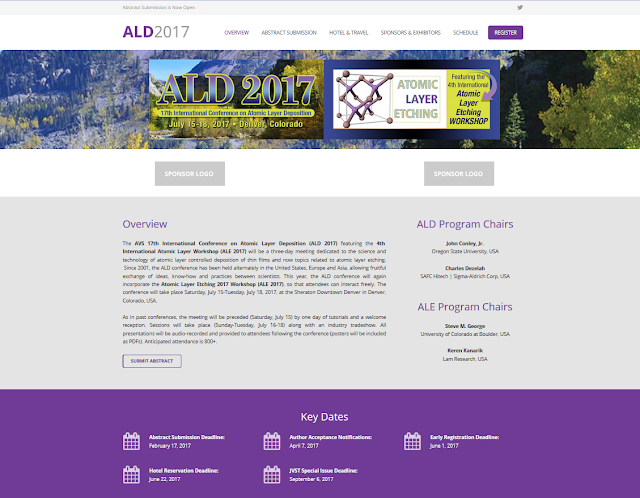Fleixible OLEDs that we all need for our next generation smartphones, tablets and wearbles are very vulnerable to contamination from the air that surrounds us and especially moisture. China is really taking on OLED high volume production and now researchers from South China University of Technology - SCUT
have developed a new material stack for OLEDs
based on a low temperature ALD process that decreases the diffusion of water vapour the
OLED device by an order of magnitude.
Anna Demming at Nanotech.Org has interviewed the Lei Ying, an
SCUT researcher and he claims that “No one has used MgO for OLED encapsulation before” and accoring to him MgO
has a number of advantages:
- a low refractive index giving high transmittance
- wide bandgap
- high dielectric constant
- high chemical stability
- lack of UV irradiation treatment requirements.
- cheap and commercially available
Accoring to the scientiffic report below the researchers uses an MgO ALD process from Mg(CpMe)2 and H2O at 80 °C since the more commonly used Mg(CpEt)2 is much more expensive than the Mg(CpMe)2 . The ALD depositions were carried out in a BENEQ TFS500 reactor.
BENEQ Thin Film System TFS 500 for ALD research and batch production (beneq.com)
The laminated Al2O3/MgO films improve the reliability of thin film encapsulationand can realize a barrier film with high density, which achieves a superior WVTR as low as 4.6 × 10−6 gm–2/day and passes storability, without any visible black spot growth under testing conditions (temperature = 60 °C, humidity = 100%) for 600 h.
Please read the interview here and study the additional materials including a movie on OLED aging testing.
Published 9 November 2016 • © 2016 IOP Publishing Ltd
Nanotechnology, Volume 27, Number 49
Abstract
A laminated structure of Al2O3 and MgO deposited by atomic layer deposition (ALD) is used to realize a thin film encapsulation technology in organic light-emitting diodes (OLEDs). This film was targeted to achieve an excellent barrier performance. As the thickness of MgO layer increased from 0 nm to 20 nm, its physical properties transformed from the amorphous state into a crystalline state. The optimized cyclic ratio of ALD Al2O3 and MgO exhibited much lower water vapor transmission rate (WVTR) of 4.6 × 10−6 gm−2/day evaluated by Calcium (Ca) corrosion at 60 °C&100% RH, owing to the formation of a terrific laminated structure. Top-emitting OLEDs encapsulated with laminated Al2O3/MgO show longer operating lifetime under rigorous environmental conditions. These improvements were attributed to the embedded MgO film that served as a modified layer to establish a laminated structure to obstruct gas permeation, as well as a scavenger to absorb water molecules, thus alleviating the hydrolysis of bulk Al2O3 material.
Realization of Al2O3/MgO laminated structure at low temperature for thin film encapsulation in organic light-emitting diodes[OPEN ACCESS]
Min Li, Miao Xu1, Jianhua Zou, Hong Tao, Lei Wang, Zhongwei Zhou and Junbiao Peng1Published 9 November 2016 • © 2016 IOP Publishing Ltd
Nanotechnology, Volume 27, Number 49
Abstract
A laminated structure of Al2O3 and MgO deposited by atomic layer deposition (ALD) is used to realize a thin film encapsulation technology in organic light-emitting diodes (OLEDs). This film was targeted to achieve an excellent barrier performance. As the thickness of MgO layer increased from 0 nm to 20 nm, its physical properties transformed from the amorphous state into a crystalline state. The optimized cyclic ratio of ALD Al2O3 and MgO exhibited much lower water vapor transmission rate (WVTR) of 4.6 × 10−6 gm−2/day evaluated by Calcium (Ca) corrosion at 60 °C&100% RH, owing to the formation of a terrific laminated structure. Top-emitting OLEDs encapsulated with laminated Al2O3/MgO show longer operating lifetime under rigorous environmental conditions. These improvements were attributed to the embedded MgO film that served as a modified layer to establish a laminated structure to obstruct gas permeation, as well as a scavenger to absorb water molecules, thus alleviating the hydrolysis of bulk Al2O3 material.



%20(1).png)







